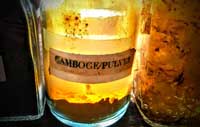The curse of the Mummy. Asphaltum, Bitumen or Mummia. Pigments from the Dead.
Obtaining a true and transparent brown hue when varnishing string instruments can be extremely difficult to the novice luthier. Often, commercial powered pigments can mask the inherent visual optics of the wood, simultaneously destroying the brilliance of any golden ground varnish applied. Commercially made brown pigments are simply difficult to work with. This has been the case for centuries. A clear, transparent brown can however, be obtained by various methods, but the color itself must be itself inherent in the material used; mixing together other pigments to create brown usually results in lackluster final results. Cooking Colophony for a period of 48 hours at low temperature can turn the rosin a rich, golden amber, but In order to obtain the lovely golden browns achieved by the early Füssen makers, some pigment must be later added. The pigment, “Mummy Brown”(Caput Mortuum) was a common, commercially available color pigment favored by Pre-Raphaelite artists and 19th Century painters. This was obtained by, you guessed it, pulverized Egyptian mummies.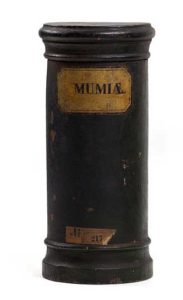 Your shock may hence be multiplied if you happen to be a cat lover; some of the materials used were from both feline, and human mummies. While some artists in the Romantic period began to raise moral objections to this practice, the use of pulverized mummies in pigments continued far past the 19th Century, spawning a greed-influenced trade in forged mummies; a gruesome practice of digging up dead cadavers, mummifying them, and selling them as ancient materials.
Your shock may hence be multiplied if you happen to be a cat lover; some of the materials used were from both feline, and human mummies. While some artists in the Romantic period began to raise moral objections to this practice, the use of pulverized mummies in pigments continued far past the 19th Century, spawning a greed-influenced trade in forged mummies; a gruesome practice of digging up dead cadavers, mummifying them, and selling them as ancient materials.
The use of Bitumen or mineral pitch goes back to Ancient times. During the Twelfth Dynasty (1991-1802 BCE) ancient Egyptians used bitumen for embalming the dead. Medieval Arab Physicians used it for medicinal purposes. The importation of Egyptian mummies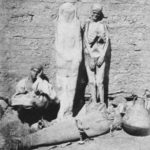 into Europe for medicinal and other uses was quite common in the 16th Century. Tombs were plundered and their contents sold whole, or as parts ground up. Despite the 19th C. moral objections, the use of mummy brown as a pigment continued into the 1930s, until concerns over preservation and rarity of specimens killed the trade. I have had wonderful results using a synthetic version of Bitumen, as well as artificial Asphaltum, however these cannot be used alone, and great care must be taken to retain transparency in the varnish. The search for a wonderful brown has been something which has preoccupied my thoughts and time for the past two decades. You may notice when browsing finished instruments in the gallery section of this website many attempts with various shades of brown. One need not, in any case, worry when ordering an instrument from me about the Curse of the Mummy; no Egyptians, cats or humans, were harmed in the making of my instruments.
into Europe for medicinal and other uses was quite common in the 16th Century. Tombs were plundered and their contents sold whole, or as parts ground up. Despite the 19th C. moral objections, the use of mummy brown as a pigment continued into the 1930s, until concerns over preservation and rarity of specimens killed the trade. I have had wonderful results using a synthetic version of Bitumen, as well as artificial Asphaltum, however these cannot be used alone, and great care must be taken to retain transparency in the varnish. The search for a wonderful brown has been something which has preoccupied my thoughts and time for the past two decades. You may notice when browsing finished instruments in the gallery section of this website many attempts with various shades of brown. One need not, in any case, worry when ordering an instrument from me about the Curse of the Mummy; no Egyptians, cats or humans, were harmed in the making of my instruments.
Horsetail, or Equisetum arvense, or, “let the wood be rubbed with reeds, and it shall be good.”
The use of common Horsetail in wood finishing was common as far back as ancient Egypt. The reed plant stalks of Equisetum were cut, and occasionally fashioned into tools by binding, cutting, or splicing. This means of burnishing a wood surface must have been effective, as there are traces of its use well into Greek and Roman times, and continuing into the Renaissance. Advanced use of Horsetail continues into modern times as an abrasive for finishing the surfaces of violins (usually maple and hardwoods only) before applying the ground varnish.
This is a truly miraculous substance. A common weed, it has additional medicinal properties and is prepared as a tea. It is mineral rich, with silicon, potassium, calcium, manganese, magnesium and phosphorus are all present in the brew which can help dampen bloating and the pains of menstrual cramps.
Violin makers have used it as an burnishing tool, with a wide variety of application methods. Commercial powders are available on the market and work similar to Italian Pumice or Rottenstone; all are common in the final stages of rubbing out violin varnishes. I use the powdered product as a final burnishing technique both before and after applying the interior varnish; something which is more uncommon but does great wonders for improving final resonance as it can work both as pore filler, as well as leaving a mirror-like surface. Interior varnishes are another topic altogether and not the subject at hand, however I will briefly say that dramatic differentiation in final sound results from specific composition of interior varnish. These involve the use of fatty, or less fatty, hence softer or harder compositions to influence both resonance and sound.
Barlow/Woodhouse (JCAS/1989) in their chemical analysis of four instruments made by Antonio Stradivari found that Silica (SI) composed 12-39% of the ground layer beneath the varnish. Other instruments by less worshiped makers such as Milanese school most likely contain similar levels of Silica, as this was no well-kept secret in Northern Italian violin making. There is a particular pleasure in using this very simple plant to burnish and finalize work which has taken months to complete, slowly and with love. It is a rather beautiful irony, that a common weed, be the final stage in such a complex series of labors.
Burning the Kettle Dark. Or how the Death of Ludwig Van Beethoven turned Violins Black.
Perhaps you have visited once upon a time the Naschmarkt outdoor antique market in Vienna on a sunny Saturday and seen the rich multitudes of Austrian artifacts and lost pieces of time on display and for sale. I have seen taxidermic monkeys, engraved whale tusks from the 19th Century, and as well endless trade fiddles from the former Czechloslovakian republic piled together in cardboard boxes, rife with cracks, and for sale at 20Euro a piece. Occasionally though, one sees a master violin on sale. This would be only encountered in the early morning, before the light of dawn, when violin hunters roam with flashlights and dreams of finding a Meistergeige. If you do happen to be so lucky (the chances are slim to nil) perhaps you might encounter an old Sebastian Dallinger, or Johann Georg Thir violin, or at least one with a very dark, almost black varnish, and with a very old, authentic looking label inside it. Don’t get too excited.
You might also begin to notice how many Germanic fiddles have a dark, discolored, or even black varnish, one which cannot be explained by the usual endless buildup of rosin from the bow absorbing dirt over eons of time.
Why are these violins black? 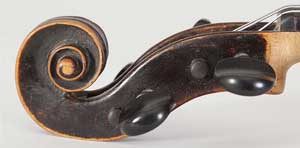 Its almost impossible to imagine any violin maker lovingly crafting an instrument, burnishing and taking great care to finalize the surface, then adding a black varnish atop it! One quite humorous explanation given to me by an avid violin collector was that, when Beethoven died, all the makers stained their violins black in order to mourn his passing. The collector even seemed to believe this myth, although it was said with a smile. The truth is actually much less dramatic, however just as tragic.
Its almost impossible to imagine any violin maker lovingly crafting an instrument, burnishing and taking great care to finalize the surface, then adding a black varnish atop it! One quite humorous explanation given to me by an avid violin collector was that, when Beethoven died, all the makers stained their violins black in order to mourn his passing. The collector even seemed to believe this myth, although it was said with a smile. The truth is actually much less dramatic, however just as tragic.
Cooking violin varnish in iron kettles was quite common far before the lifetime of Beethoven. Some have suggested that the use of iron was considered advantageous to the final hue of color to the varnish, however I tend to believe that the use of iron was simply that it was a common material, stable, and easily obtained. In any case, what these makers did not realize is that the Ferrous Cations or Ferrous ion; Iron(2+) from the kettle would over time oxidize and turn the varnish black. This could take a century or longer, or less. All depends on the amount of light exposure to the instrument.
What is intensely ironic is that a later trend of violin fraud and forgery developed from this purely accidental chemical reaction, and even became mainstream, as later in some early 20th Century factories fiddles were mass produced and “black” varnish was applied to mimic the poor original black fiddles. R.I.P Lieber Beethoven!
Dragons Blood. Or the Knight slayeth the Dragon to Color his Violin Red.
This is a very rare material obtained from the internal organs and blood of real dragons. Indeed as dragons are quite rare as and lately fall under protection of international law this can be a very expensive material for violin making.
I am joking! Dragons Blood is a resin obtained from several species plant species. Medieval scholars did once claim its source to be the actual blood of dragons killed in battle, and the early Greeks, Romans, and Arabs thought it to have medicinal qualities, particularly for respiratory and gastrointestinal ailments.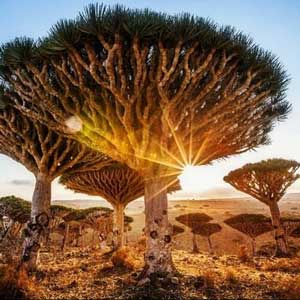
(Dracaena draco) and (Dracaena cinnabari) were the most common species used in 18th Century violin varnishes, though this was not the only means to achieve a deep red hue. Quality of this material is famously variable and unstable depending upon location of species, and preparation methods. In modern times imitations of true dragons blood can be found on the market as a powder, however the results tend to be very poor, and in the worse case, not light sensitive. The best quality comes in buttons or large solid balls of pure material. These are soluble in alcohol but require further treatment by tincturing in alcohol and removing the resins.
I have experimented with several methods of achieving beautiful red varnishes over the years, 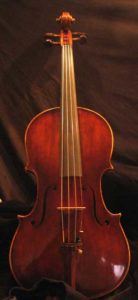 including alternatives to dragons blood using substances such as Madder Root (Rubia tinctorum) and extracting the pure color using an old Gaggia coffee machine. These days however I prefer to focus on more subdued colors, the rich antique browns and ambers which seem to be more spiritually related to the inherent color of wood itself. In many alternative wood materials such as willow, Cedar, Sycamore or lacewood there can be already present a rich, natural coloring which the violin maker must balance into his other palettes of color when varnishing, which can be a sometimes difficult task.
including alternatives to dragons blood using substances such as Madder Root (Rubia tinctorum) and extracting the pure color using an old Gaggia coffee machine. These days however I prefer to focus on more subdued colors, the rich antique browns and ambers which seem to be more spiritually related to the inherent color of wood itself. In many alternative wood materials such as willow, Cedar, Sycamore or lacewood there can be already present a rich, natural coloring which the violin maker must balance into his other palettes of color when varnishing, which can be a sometimes difficult task.
The Venetian makers sometimes used Dragons Blood to great effect, taking advantage of being located directly on ancient trade routes for rare pigments and other materials. Every violin maker must go through a phase of dragons blood, for better or worse. For now, I will spare the dragon his dear life.
Gamboge.
The first sources of Gamboge are in Oriental culture around the 8th century for decorative arts, which is not surprising as the resin used for its bright, illuminating yellows stems from the Garcinia evergreen tree, in Southeast Asia. The etymological source is from the Latin Gambogium, or Cambodia.
Gamboge was used medicinally to treat high blood pressure, and as a powerful laxative.We first encounter Gamboge in European culture around the start of the 17th Century, as it became common with Flemish painters to achieve warm golden yellow hues. Today when purchasing Gamboge one must have a poison handling permit, as when ingested in too large amounts it can be lethal.
If you are unclear about the specific hue of yellow that Gamboge produces, think of a Buddhist monk’s robe; Gamboge is often used to dye fabrics as its yellow it very pure and lovely.
It is fascinating how many materials used for varnish and lutherie go back so far into time. This however should not be surprising. The traditions of ancient crafts seem to merge into one another. I usually hibernate in Vienna every winter, and have found myself walking into tool supply shops for Goldsmithing, and something clicked in my head. Many of the tools used could easily transubstantiate into ones needed for violin making. One is quite surprised how these two very different crafts might merge together. I am always searching for these beautiful mergings, where the past reaches its warm arms into the present, and the future.

